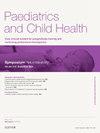Revolutionizing paediatric neurorehabilitation: integrating innovation and contemporary practice
Q3 Medicine
引用次数: 0
Abstract
The field of paediatric neurorehabilitation is undergoing significant transformation, driven by evolving care pathways, innovative technologies, and a growing emphasis on addressing health disparities. Children and young people (CYP) with acquired brain injuries (ABI) benefit from rehabilitation that optimizes their participation in daily life across home, school, and community settings. This paper explores the changing landscape of paediatric neurorehabilitation and changing patterns of causes of brain injury in children. The discussion extends to health inequalities that affect access to care, underscoring the need for system-wide reforms to bridge disparities linked to socioeconomic, geographic, and cultural factors. The development of seamless, end-to-end service pathways, from acute care to specialist tertiary neurorehabilitation and onward community services, demonstrates the potential for integrated care to improve outcomes for CYP transitioning from hospital to home. Central to effective rehabilitation is personalized goal setting and high-intensity treatments, which enhance physical, cognitive, and social outcomes. Technological advancements, including virtual reality, robotics, and electrical muscle stimulation, are reshaping therapeutic approaches, increasing engagement, and fostering neuroplasticity. Findings advocate for ongoing research, investment in community services, and equitable application of emerging technologies. By prioritizing personalized care and addressing systemic barriers, the future of paediatric neurorehabilitation holds promise for improved long-term functional outcomes for children with ABI.
革命性的儿科神经康复:整合创新和当代实践
在不断发展的护理途径、创新技术和日益强调解决健康差距的推动下,儿科神经康复领域正在经历重大变革。获得性脑损伤(ABI)的儿童和青少年(CYP)受益于康复,可以优化他们在家庭、学校和社区环境中的日常生活参与。本文探讨了儿科神经康复的变化景观和儿童脑损伤原因的变化模式。讨论扩展到影响获得保健的卫生不平等,强调需要进行全系统改革,以弥合与社会经济、地理和文化因素有关的差距。无缝的端到端服务路径的发展,从急症护理到专科三级神经康复,再到社区服务,表明了综合护理的潜力,可以改善从医院到家庭的CYP过渡的结果。有效康复的核心是个性化目标设定和高强度治疗,以提高身体、认知和社会结果。包括虚拟现实、机器人技术和肌肉电刺激在内的技术进步正在重塑治疗方法,增加参与,促进神经可塑性。调查结果提倡进行研究、投资社区服务和公平应用新兴技术。通过优先考虑个性化护理和解决系统障碍,儿科神经康复的未来有望改善ABI儿童的长期功能结果。
本文章由计算机程序翻译,如有差异,请以英文原文为准。
求助全文
约1分钟内获得全文
求助全文
来源期刊

Paediatrics and Child Health (United Kingdom)
Medicine-Pediatrics, Perinatology and Child Health
CiteScore
1.20
自引率
0.00%
发文量
70
 求助内容:
求助内容: 应助结果提醒方式:
应助结果提醒方式:


